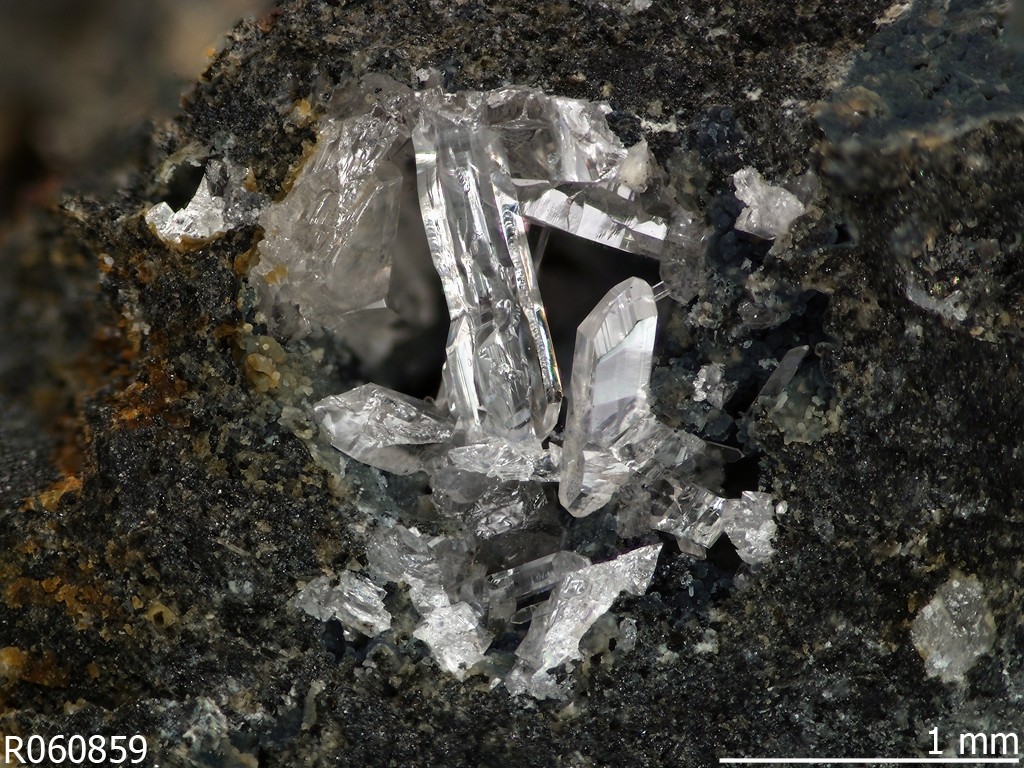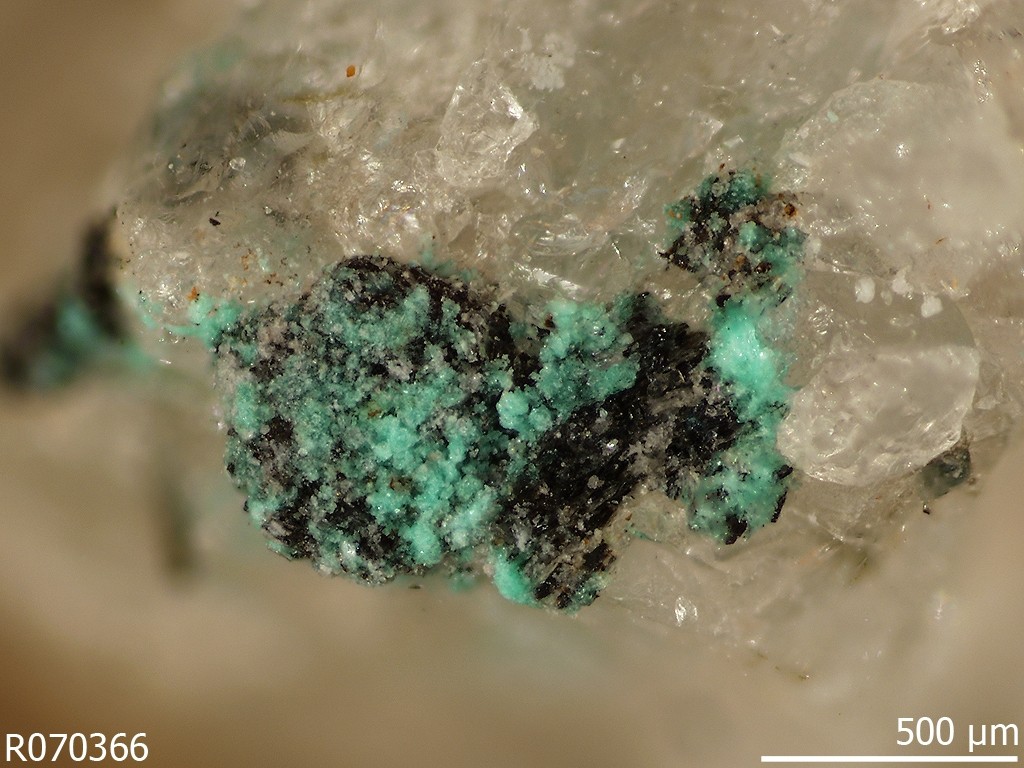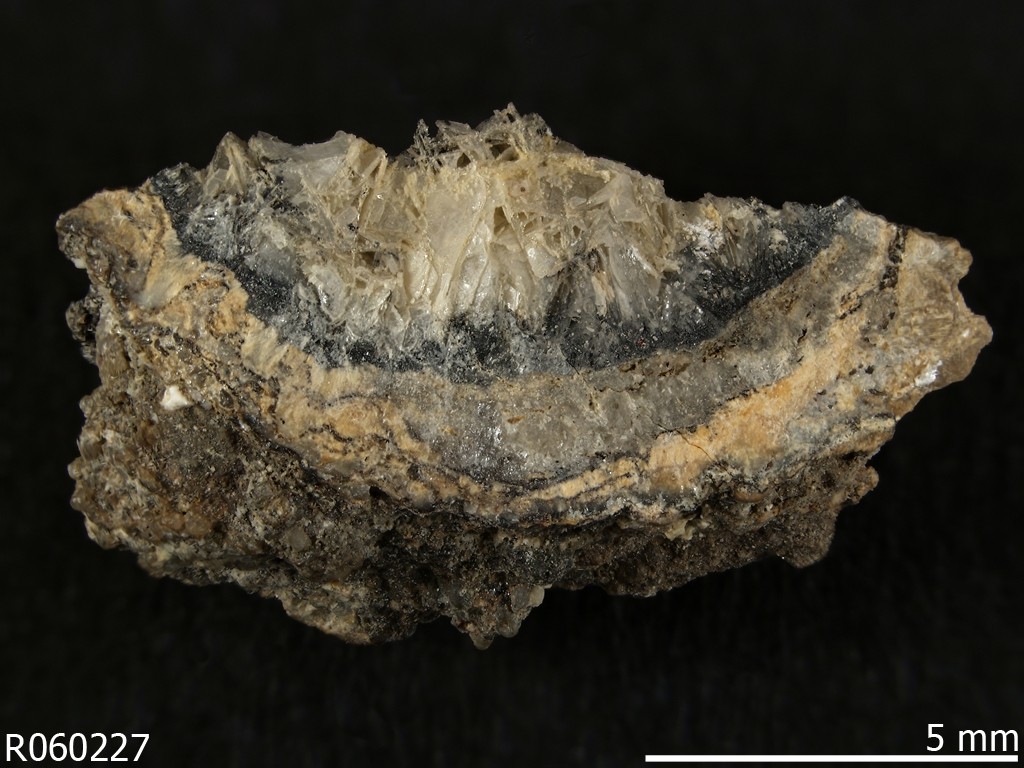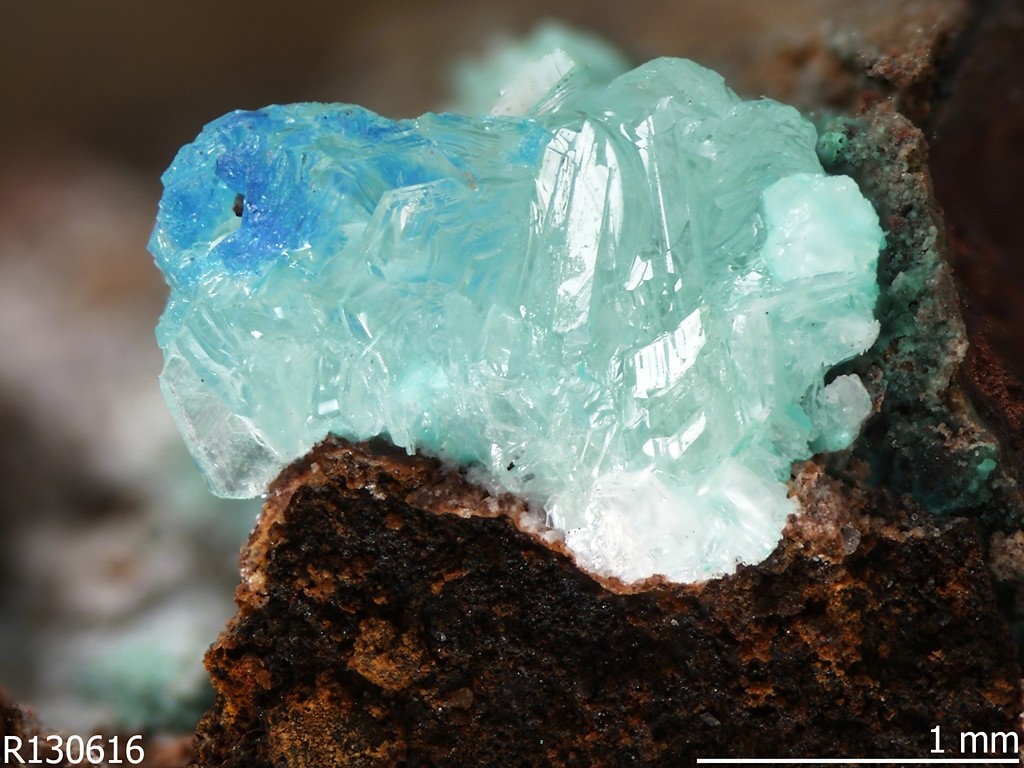
Nealite [Pb4Fe(AsO3)2Cl4·2H2O] From an ancient slag site in Greece, formed by slag meeting seawater. Credit RRUFF.
For the first time, more than 200 mineral species have been identified that originated either principally or exclusively due to human activities – primarily as a result of mining.
The study, led by Robert Hazen of the Carnegie Institution for Science published by American Mineralogist bolsters the argument to officially designate a new geological time interval distinguished by the pervasive impact of human activities called the Anthropocene Epoch.
Tinnunculite has been determined to be a product of hot gases reacting with the excrement of the Eurasian kestrel at a burning coal mine in Kopeisk, Russia.

Fiedlerite [Pb3Cl4F(OH)·H2O]
From an ancient slag site in Greece, formed by slag meeting seawater. Credit RRUFF.
The majority of the recognized minerals originated in ore dumps, through the weathering of slag, formed in tunnel walls, mine water or timbers, or through mine fires. Six were found on the walls of smelters and three formed in a geothermal piping system.

Chalconatronite [Na2Cu(CO3)2·3H2O], A result of quarrying, Mont Saint-Hilaire, Quebec, Canada. Credit RRUFF.
Dr. Hazen, who co-wrote the paper with Edward Grew of the University of Maine, and Marcus Origlieri and Robert Downs of the University of Arizona, says “mineral evolution has continued throughout Earth’s history”:

Abhurite [Sn21O6(OH)14Cl16] from the wreck of the SS Cheerful, 14 miles NNW of St. Ives, Cornwall, England. Credit RRUFF.
“Within that collection of 5,200 are 208 minerals produced directly or indirectly by human activities, mostly since the mid-1700s, and we believe that others continue to be formed at that same relatively blazing pace. To imagine 250 years relative to 2 billion years, that’s the difference between the blink of an eye (one third of a second) and one month.”
“Simply put, we live in an era of unparalleled inorganic compound diversification,” says Dr. Hazen. “Indeed, if the Great Oxidation eons ago was a ‘punctuation event’ in Earth’s history, the rapid and extensive geological impact of the Anthropocene is an exclamation mark.”
According to the paper large scale movement of rocks, sediments and minerals through mining, quarrying and construction over thousands of years “rivals in scale” nature’s distribution, for instance by glaciers.
Minerals with no confirmed natural occurrence include those recovered from ore dumps such as wheatleyite and widgiemoolthalite and others associated with mine dump fires like acetamide, hoelite and kladnoite. Paceite and hoganite were formed by interaction with mine timbers while calclacite was formed in storage cabinets in museums.

Above image: Simonkolleite [Zn5(OH)8Cl2·H2O] found on a copper mining artifact,
Rowley mine, Maricopa County, Arizona. Credit: RRUFF.
“If buried in the stratigraphic record and subsequently unearthed in the distant future, would reveal unambiguously the passion of humans for the beauty and wonder of the mineral kingdom.”
According to Dr. Downs “there must be hundreds of as yet unrecognized ‘minerals’ in old mines, smelters, abandoned buildings, and other sites. Meanwhile, new suites of compounds may now be forming in, for example, solid waste dumps where old batteries, electronics, appliances, and other high-tech discards are exposed to weathering and alteration.”
Of the human-mediated minerals identified by the Deep Carbon Observatory researchers, 29 contain carbon and 14 of these have no recorded natural occurrence (click here for map). Among the 14, candidates for the very youngest include a dozen minerals related to uranium mines, say the authors:
The mineral andersonite, for example, is found in the tunnels of certain abandoned uranium mines in the American Southwest. At places along the tunnel walls, sandstone becomes saturated with water that contains elements that form a beautiful crust of yellow, orange and green crystals. Prized for its bright green fluorescent glow under a black light, a good sample of andersonite will fetch up to $500 from a collector.
Another notable carbon-bearing mineral is tinnunculite, determined to be a product of hot gases reacting with the excrement of the Eurasian kestrel (Falco tinnunculus) at a burning coal mine in Kopeisk, Chelyabinsk, Russia. It was subsequently discovered also on Russia’s Mt. Rasvumchorr – an entirely natural occurrence.
Click on pictures above for full-size images. Click here for the Deep Carbon Observatory map of human-made carbon bearing minerals. Click here for Carnegie Science and here for American Mineralogist.
6 Comments
Colton Powell
Cool
Colton Powell
Do the new minerals taste good?
J'cobi Larsen
yeet jcobi
J'cobi Larsen
Simonkolleite is a cool looking rock
Ld_Elon_Postman_RoyalMale
Humans are natural, an nature intended for human to create such things for universal development/progress & completion. Universe is still evolving. Humans were s/needed to make forth these elements an composits.
Ld_Elon_Postman_RoyalMale
Funny how your built as a machine an nature has arranged patterns. aint it lads..